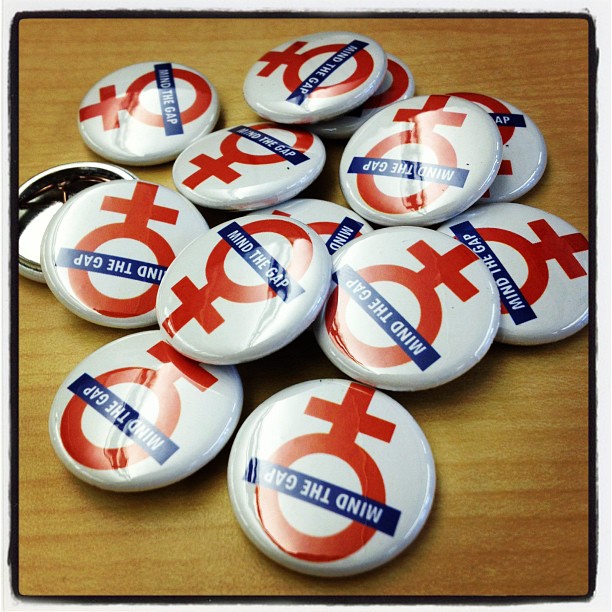This article was written by Yulia Nesterova and Liz Jackson.
The gender gap in universities has tilted in favor of women as a result of increased access and inclusion of women in higher education. This does not mean, however, that gender equality – equal status between men and women and personal empowerment – has been achieved in universities.
A gender balance has been achieved in enrolment and in undergraduate and some graduate degree programs. However in many doctoral programs and in jobs following the PhD (especially in research posts and those that have more power, resources, rewards, and influence), men predominate while women PhDs and academics remain in more subordinate positions.
A numerical advantage of women at the undergraduate level does not prevent unequal gendered power relations between women and men. Despite increased representation of women on campus, relations have not transformed much.
Women still experience patriarchy and hegemonic masculinity that manifests itself in various forms of discrimination. Moreover, when rigid cultural gender roles are strong and gender equality mainstreaming is slow or absent, higher numbers of women do not translate into a decrease in gender-based bias, stereotyping and violence.
A numerical advantage of women at the undergraduate level does not prevent unequal gendered power relations between women and men. Despite increased representation of women on campus, relations have not transformed much.
These are still pressing issues on university campuses despite their being largely invisible and in many cases silenced, or rationalized. Sexist relations between men and women, manifesting from casual “banter” to physical attacks, are mostly targeted at women, although many men have also reported being sexually harassed.
Such heterosexual masculine culture and sexism on campuses are produced and reproduced by students and professors alike in the forms of discriminatory and prejudicial treatment and harassment and assault. This culture with its differential treatment erodes self-esteem and opportunities for women. It also damages male students’ experiences, as men disengage from campus social and academic life when they feel pressure to conform to its problematic aspects, by being passive or engaging in denigrating, belittling, or humiliating women and other vulnerable groups. We have observed many male colleagues expressing distress in such instances, as they may also feel powerless to change the culture if they are in their PhD programs still working as early career researchers in fields where such masculinity is most often on display, such as in natural sciences.
In many cases this culture may not be explicit, as often gender bias and stereotypes are not fostered intentionally, but are part of the accepted and taken-for-granted social relationships and communication where “nonconscious hypotheses about sex differences” are naturalized and reinforced in the classroom and co-educational activities.
Some specific examples of such biases and sexism include, but are not limited to, focusing on women’s appearances rather than on their accomplishments, paying more attention to men when they speak, viewing marriage and parental status differently for men and women, and attributing women’s achievements to something other than their abilities. In our own experiences, we have been dismayed to find ourselves in situations where male colleagues comment on our looks and weight rather than our work, or query us about our families and what we do for them, rather than about our teaching or research.
Such “benevolent sexism” also includes conceptualizing women as weak, affectionate, delicate, sensitive, incompetent, and in need of protection, and therefore inferior to men.

In the photo: “Rage Coffee” Photo credit: Martha Rich
Gender Inequality: The Adverse Role of Benevolent Sexism
Women who appear to abide by these roles represent the “good girls” who are less likely to experience or report on their being sexually harassed or assaulted. Yet if a woman violates these norms, her role and behavior are implicitly seen as questioning or challenging the authority of men, or as occupying positions traditionally reserved for men. Some believe that these women invite rape and other manifestations of hostile sexism and gender-based violence.
Whilst physical assault typically results in trauma, benevolent sexism makes women doubt themselves and their cognitive capabilities, resulting in diminished performance in education and work. Another side effect is that women internalize such negative feelings. They may start believing that they are the cause of the problem, and that it is their fault that belittling behaviors, sexual advances and sexism happen to them.
Universities usually have services in place for reporting incidents such as being pressured to engage in sexual relationships and other gender-based abuse, from minor silencing to physical violence.
Yet many students may feel they are unable to challenge the perpetrators and are unsure of where or whom to report to and get help. They also may fear the backlash and victim blaming that may follow reporting their experience. That’s why they “comply ‘to give face,’ to obey and respect, and to show loyalty and dedication to earn goodwill” of those who are in more powerful positions, and can determine their professional future.
Often those engaging in harassment are respected members of an academic community, and some may not even realise they are making women around them uncomfortable, which means that a woman has to challenge the status quo if she does not challenge herself instead.
In cultural contexts where hugging is common, for example, we have found ourselves in conversations with men and other women to try and come to a consensus on when one crosses the line between warmth and affection and making someone uncomfortable. These conversations make it impossible to decrease benevolent sexism, highlighting the very challenge of pinpointing where benevolence could go wrong in social relationships.
Often those engaging in harassment are respected members of an academic community, and some may not even realise they are making women around them uncomfortable, which means that a woman has to challenge the status quo if she does not challenge herself instead.
In our experience, it becomes even more complicated in the context of conferences where women have to engage in “emotional labor” while communicating with male academics. In such settings, women often face sexualization by their male colleagues. They may also be treated as “sunny daughters” or “little sisters” who are seen as willing receivers of advice and mentoring instead of peers with their own views and research. Interestingly, some male PhD students feel they are in the position to give advice to women who have a higher academic rank.
 In the photo: Image from an illustrated article about women confronting sexual harassment in Science and Research also and not just Hollywood or STEM fields. Photo credit: Shreya Gupta
In the photo: Image from an illustrated article about women confronting sexual harassment in Science and Research also and not just Hollywood or STEM fields. Photo credit: Shreya Gupta
Beyond higher education, UNESCO has observed that globally men still wield more power across diverse societies. Due to this, women do not benefit from their education to the same extent as men do. They often require more education to get the same jobs, and encounter discrimination and disparities of power and voice, and thus have difficulty achieving their full potential.
Female graduates, despite being the majority in undergraduate and masters courses, are less likely than men to secure graduate-level jobs and on average earn less than men six months after graduation.
Oxford University found that gender is the strongest determining factor in these employment statistics, and that gender-based differences in career destinations start with attitudes that are instilled in girls and boys at a young age. The study concluded that universities need to provide training on harmful gender-related issues for both women and men.
Related articles: SDG 5: ACHIEVING GENDER EQUALITY
THE GLOBAL GOAL TO END GENDER DISCRIMINATION – HOW ARE WE DOING?
The Impact of “Brotherly Comradeship”
Another concern for female students is the difficulty to engage with male supervisors and a tendency to be left out of their supervisor’s circle where male students feel welcome. Given such experiences of isolation, male students tend to benefit from friendlier and more respectful attitudes from their supervisors.
Male students thus have greater access to grants and projects from their supervisors, which in turn gives them greater opportunities to be published and to enhance their skills and professional advantage while studying.
Particularly in STEM fields, male doctoral students bond with their male professors and junior fellows, creating “brotherly comradeship” through their mentoring, role modeling, and academic grooming – experiences from which women in STEM are largely excluded. Sometimes this occurs as part of an “old boys’ club” with a great deal of drinking and socializing, which may also make female students and junior colleagues wary as the likelihood of harassment is thought to increase when alcohol is part of the picture.
At a professorial level, research has found that there is much more expected of female academics than their male counterparts. They are held to a different standard, especially by students who are more biased against female professors and lecturers and expect them to treat them in a motherly way while also engaging as expert researchers. For example, we have encountered students who expect us to meet with them for informal, personal counseling, an expectation that is not extended to male academics, thus creating an additional burden to building positive and equitable educational relationships.
There are also studies that report on all-male conference panels, on the overlooking and exclusion of women at conferences, and on sexual harassment and advances women often face during academic conferences. While these stories are receiving more publicity now than in the past, the abundance of such stories highlights how male-only panels have very much been an academic norm, which has not undergone much scrutiny until quite recently.
 Photo credit: Dr. Ana Lucia Araujo
Photo credit: Dr. Ana Lucia Araujo
Gender Inequality: The Glass Ceiling in Leadership Positions
In promotion and leadership, gender inequity has long been recognized as a serious problem. The recent case of the Nobel Prize winner Donna Strickland, an Associate Professor at the University of Waterloo, drew attention to the issue of promotion, as she had been an Associate Professor for about twenty years while conducting her research. Recently, the issue of leadership has been addressed through policies that promote the recruitment of women to management positions. The University of Hong Kong, for example, pledged to use “compulsory diversity” to increase the proportion of women in dean-level positions from 9% to 26%. The University of Nagoya in Japan will have women-only jobs, with the aim of a 75% increase in women in senior faculty positions. Research from other countries shows, however, that despite access to these positions, women may leave leadership roles due to the continued norms of a masculine-oriented culture that overlooks gender issues in the workplace.
Women’s progress and advancement in academia and work settings are also complicated by traditional beliefs about particular gender roles assigned to women and men. Studies by Hong Kong women, for example, suggest that it is women who are in conflict over what choices to make due to their multiple roles as mothers, daughters, professionals and wives. Many women experience guilt for working instead of caring for their families, and as a result adjust their career and lifestyle expectations according to their family demands, disregarding their own interests. This double burden prevents them from advancing to senior roles.
Professional spaces, including universities, lack substantial support for working mothers and fathers that is needed so that women can continue their professional life guilt-free. It is this gendered institutionalized culture, environment, and standards determined by individual biases and perspectives that require close examination. There is an urgent need to identify the barriers unconsciously set for women and men to fully develop their potential and seek opportunities beyond university.
Many women experience guilt for working instead of caring for their families, and as a result adjust their career and lifestyle expectations according to their family demands, disregarding their own interests.
While contexts are diverse and what happens in one may not necessarily be applicable to another, “patriarchy and misogyny are sadly almost universal and are sustained by similar forces.” Anti-bias training and related inclusive dialogue for reflecting on how culture, traditions, systems and individual attitudes intersect is important to enable higher education communities to respond more effectively to this multi-dimensional, longstanding challenge.
The challenge won’t simply go away, and the “glass ceiling” won’t be broken just because there are more women in university spaces.
NOTE: THE OPINIONS EXPRESSED HERE BY IMPAKTER.COM COLUMNISTS ARE THEIR OWN, NOT THOSE OF IMPAKTER.COM. FEATURED IMAGE CREDIT: SARAH STIERCH

Liz Jackson is Associate Professor of the Faculty of Education at the University of Hong Kong. She is also the Director of the Comparative Education Research Centre at the University of Hong Kong and the President-Elect of the Philosophy of Education Society of Australasia. She is Deputy Editor of Educational Philosophy and Theory, and Series Editor for New Directions in Philosophy of Education. Her research interests include diversity and social change in education and values in civic and moral education. Twitter. Website.



 In the photo: Image from an illustrated
In the photo: Image from an illustrated Photo credit:
Photo credit: 





